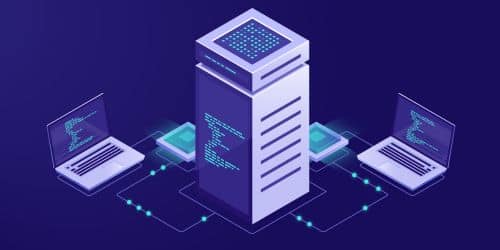Database management is not a single entity; rather, it is a set of actions (and, in some cases, a dedicated technology) for manipulating business data across the course of its existence. As data volumes increase, businesses have discovered that database management systems are essential for preventing poor application performance and minimizing any impact on availability, compliance, and security.
A corporation can use numerous approaches and actions under the umbrella of “database management” to mitigate or prevent the harmful effects of uncontrolled, exponential data expansion.
What is a Database Management System (DBMS)?
A database management system (DBMS) is a software-defined system that maintains databases and their data, whereas database management is a set of best practices. Microsoft SQL Server, Oracle Database, and PostgreSQL are examples of popular database management systems. Users have control over the data in a database using a DBMS and can read, update, create, and remove data. A database management system acts as an interface, allowing end users to access their databases and arrange and access the data as needed.
A database management system allows users, such as database administrators, to manage the data, the engine that allows users to access the data within the database, and the database schema, which is the database’s organizational structure. A DBMS provides security and data integrity, but some systems also include automated rollbacks and restarts, logs, and audit activity within a database.
Database management systems are classified into several types:
- A centralized system in which all data is stored in a single area that users may access to change the data.
- A distributed system in which data is stored in many nodes.
- A federated system can offer data without duplicating source data. This category is further subdivided into two subcategories:
- Access to other component databases is required by a loosely connected database.
- A tightly connected database incorporates separate processes into a federated system.
- Blockchain database systems manage financial and non-financial transactions.
What Makes Up A Data Management System?
- The storage engine: the core component of a DBMS and saves the data. It is the component of the system that connects with the file system at the operating system level. It serves as the entry point for any SQL queries that interact with the stored data.
- System catalog or database dictionary: Also known as the metadata catalog, this component serves as a centralized store for all database items created. It is used to confirm user data requests and to offer information about a database’s objects, security, performance, and other features.
- Database access language: Every DBMS requires an application programming interface (API) to allow users to create databases and access data, which is often provided via a database access language. In relational databases, for example, structured query language (SQL) is the default data access language.
- The optimization engine: processes data requests and converts them into actionable directives. It also aids in the optimization of databases.
- Query processor: After a query (data request) has been optimized, the query processor handles the request and returns the results. It serves as a sort of go-between for the database and user queries.
- Lock Manager: This component prevents several users from altering the same data at the same time. It limits access for each user individually.
- Log manager: All DBMSes preserve logs of how and when data in the database is edited, created, or removed. The log manager, which can also interface with database tools to restore data or create backups, records this information. It keeps the logs organized and accessible by categorizing them.
- Data utilities: This category encompasses a wide range of components that help to ease database maintenance and monitor activity. They may comprise software for data backup and restoration, integrity checks, reporting and monitoring, basic repair, validations, and other functions.
Database Management System Types
Databases are classified into numerous categories. Here are some common types:
#1. Hierarchical Databases
In a hierarchical database management system (hierarchical DBMS) Model, data is stored in a parent-child relationship node. Aside from real data, records in a hierarchical database also contain information about their groups of parent/child connections.
Data is grouped into a tree-like form in a hierarchical database model. The information is saved in the form of a collection of fields, each with a single value. The records are linked to one another via parent-child relationships. Each child entry in a hierarchical database model has only one parent. A parent may have more than one child.
To get the data from a field, we must go through each tree until the record is located.
Hierarchical databases are commonly utilized in the banking and telecommunications industries to construct high-performance and high-availability solutions. In the early 1960s, IBM created the hierarchical database system structure. At the same time, the hierarchical structure is basic but rigid due to the one-to-many link between parent and kid.
Hierarchical databases are well-known examples, such as the IBM Information Management System (IMS) and the Windows Registry.
#2. Network Databases
Network database management systems (Network DBMSs) generate relationships between entities by utilizing a network structure. Large digital computers are the primary platforms for network databases. Network databases are hierarchical; however, unlike hierarchical databases, where one node can only have one parent, a network node can have several relationships. A network database resembles a spider’s web or a linked network of records.
In network databases, children are referred to as members, while parents are referred to as occupiers. Each child or member differs in that it may have more than one parent.
The network data model approval process is similar to that of a hierarchical data model. A network database’s data is arranged in many-to-many relationships.
#3. Relational Databases
The link between data in a relational database management system (RDBMS) is relational and recorded in tabular form of columns and rows. Each column in a table represents an attribute, and each row represents a record. A table’s fields each represent a data value.
RDBMS are queried using Structured Query Language (SQL), which includes entering, updating, removing, and searching records. Relational databases use a key field to uniquely identify each row in each table. These key fields can be used to link one data table to another.
The most common and commonly used databases are relational databases. Oracle, SQL Server, MySQL, SQLite, and IBM DB2 are some common DDBMS.
#4. Object-Oriented Model Database
We must discuss the usefulness of object-oriented programming in this Model. It necessitates more than simply storing programming language objects. The semantics of C++ and Java are being enhanced by object DBMS. It supports native language compatibility while providing full-featured database development features. It extends object programming languages with database features.
The Object-Oriented Programming technique is analogous to the creation of applications and databases in a consistent data model and language environment. Applications employ less code, more intuitive data modeling, and are easier to maintain. With a little extra work, object developers may create comprehensive database apps.
The integrity of object-oriented programming languages and consistent systems is the basis for object-oriented database development. The power of object-oriented databases stems from the cyclical treatment of both persistent data, such as that found in databases, and transient data, such as that found in running applications.
#5. Graph Databases
Graph databases are NoSQL databases that use a graph structure for semantic queries. The information is organized into nodes, edges, and properties. A Node in a graph database represents an entity or instance, such as a customer, person, or vehicle. In a relational database system, a node is identical to a record. In a graph database, an Edge describes a relationship that connects nodes. Properties are bits of information that are added to nodes.
Graph databases include Neo4j, Azure Cosmos DB, SAP HANA, Sparks, Oracle Spatial and Graph, OrientDB, ArrangoDB, and MarkLogic. Some RDBMS, notably Oracle and SQL Server 2017 and subsequent versions, also support the graph database structure.
#6. ER Model Databases
A database is generally used to implement an ER model. Each table Row represents one instance of an entity type in a simple relational database system, and each field in a table represents an attribute type. A relationship between entities is accomplished in a relational database by storing the primary key of one entity as a pointer or “foreign key” in the table of another object.
#7. Document Databases
Document databases (Document DB) are NoSQL databases that store data in the form of documents. Each document represents the data, its relationship to other data pieces, and its data properties. Data in a document database is stored in a key-value format.
Document DB has recently gained popularity due to its document store and NoSQL capabilities. NoSQL data storage allows for faster document storage and search.
Hadoop/HBase, Cassandra, Hypertable, MapR, Hortonworks, Cloudera, Amazon SimpleDB, Apache Flink, IBM Informix, Elastic, MongoDB, and Azure DocumentDB are all popular NoSQL databases.
#8. NoSQL Databases
SQL is not the primary data access language in NoSQL databases. NoSQL databases include graph databases, network databases, object databases, and document databases.
Because NoSQL databases do not have established schemas, they are ideal for quickly changing development environments.
NoSQL enables developers to make changes on the fly without having to restart programs.
NoSQL databases are classified into five major types: column, document, graph, key-value, and object.
Examples of Database Management Systems (DBMS)
#1. MySQL
MySQL is a client-server relational database management system (RDBMS) that is open source. Let us first define client-server architecture. Clients are computers that install and operate RDBMS software. They connect to the RDBMS server whenever they need to access data. That is the “client-server” component.
#2. Microsoft Access
Microsoft Access is a DBMS from Microsoft that combines the relational Microsoft Jet Database Engine with a graphical user interface and software development capabilities. It is part of the Microsoft Office suite of software, and is available in professional and higher editions.
#3. Oracle
Oracle is a relational database management system that was developed and is maintained by the Oracle Corporation. Within a single database, it currently supports several data models such as document, relational, and key-value. The system is based on a relational database foundation, through which users can directly access data items.
#4. Microsoft SQL
Microsoft SQL Server, along with MySQL, PostgreSQL, and Oracle, is one of the most popular relational Database management systems as a wholly commercial solution. It is capable of effectively storing and managing relational data. To communicate with SQL Server databases.
Why Businesses Need Database Management
The explosion of data shows no signs of abating. As a result, corporations are investing in database management activities, database managers, and database management systems to:
- Maintain business activities as anticipated.
- Maintain a record of customers, data inventories, and workers.
- Maintain the performance of your application and database.
- Store and arrange many types of data.
- Automate database operations and procedures.
The advantages of a database management system, in particular, are difficult to overlook, especially as the volume of data generated by humans and machines on a daily basis grows. One of the most noticeable advantages is increased data security in a database. Businesses can utilize DBMS to improve data access and let end users across the enterprise share data. As a result of having access to the precise data they require, these end users can produce faster sales and make faster choices.
Furthermore, by using a database management system, firms may reduce problems caused by data inconsistency, which occurs when several forms of the same data exist in separate locations. A DBMS gives organizations a complete, transparent picture of how data is shared, preventing wasteful data copies. A DBMS also enables enterprises to enforce data security and privacy standards, lowering the chance of a data leak.
Finally, end users would be able to make informed decisions based on the data at their disposal. Better, more consistent data provides high-quality, useable information that can assist users in making decisions based on the precise data they require. This, in turn, leads to increased productivity throughout the organization.
How To Choose A Management System
Whether your organization wants to develop database management best practices or implement a database management system, selecting the correct DBMS is influenced by a variety of criteria and priorities.
Understanding your present database(s) is the first and most important step in selecting which DBMS is best for you. Each database will have its own set of data, so organizations should be aware of their requirements. A good DBMS will provide a consolidated view of the state of your data, allowing you to understand where it is stored and how it is being used. Not to mention, a DBMS will provide access to data across several applications without the need for data replication.
It’s also crucial to remember that, like many other systems, a DBMS will require additional memory and CPU, so organizations should consider whether they can meet this requirement. However, the advantages of DBMS are palpable, particularly when dealing with large amounts of sensitive data, such as that seen in healthcare institutions.
What Are The 5 Purposes Of Database Management Systems?
Concurrency, security, backup and recovery, integrity, and data descriptions are all functions of a DBMS. Database management systems offer numerous advantages, but they are costly and time-consuming to set up.
- Top 27 Database Management Systems (DBMS) Software In 2023
- DATABASE MANAGEMENT: Definition, Types and Benefits
- Database Management Software: Definition, Types & Top 10 Picks
- MOST POPULAR PROGRAMMING LANGUAGES: 2023 Guide






